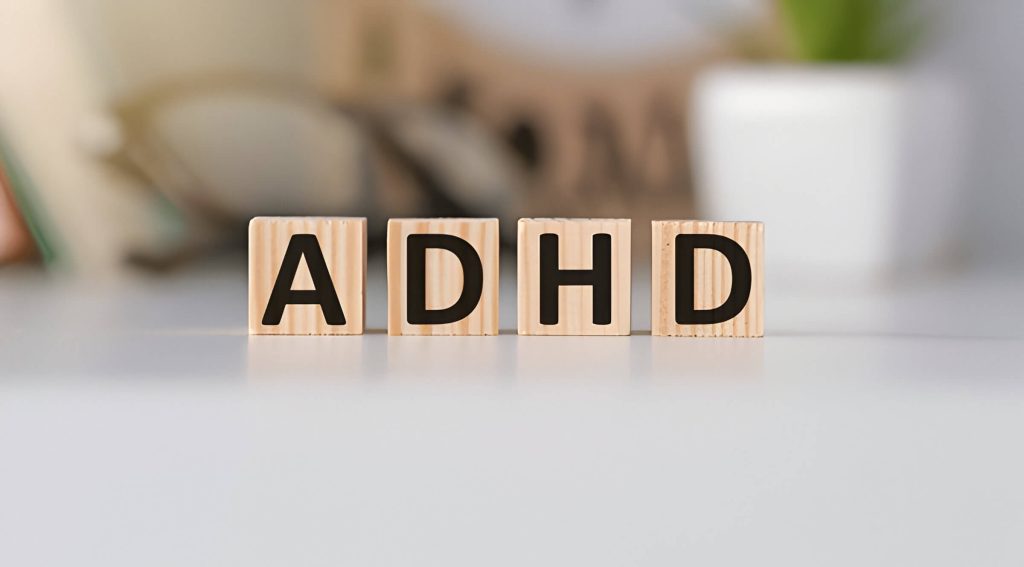
ADHD paralysis, or executive dysfunction, is a common symptom in those with ADHD. It leaves sufferers feeling immobilized and unable to complete tasks, affecting daily life. Understanding cognitive overload and dopamine deficiency is key to finding coping mechanisms. This article explores the science behind ADHD paralysis, identifies triggers and signs, and offers strategies for overcoming it. It also examines the role of therapy, medication, and lifestyle changes in managing symptoms.
What is ADHD Paralysis?
ADHD Paralysis, often referred to as ADHD freeze, is a phenomenon experienced by individuals with Attention Deficit Hyperactivity Disorder (ADHD). It occurs when the brain becomes overwhelmed by tasks or decisions, leading to a temporary inability to take action. This state of inaction can be frustrating and debilitating for those affected.
The underlying cause of ADHD paralysis is closely tied to executive dysfunction, a core symptom of ADHD. Executive functions are the cognitive processes that help us plan, prioritize, and execute tasks. When these functions are impaired, it can result in difficulty starting or completing tasks, managing time effectively, and making decisions.
ADHD symptoms such as distractibility, impulsivity, and hyperactivity contribute to this paralysis by increasing the mental load on the individual. The more overwhelmed they feel, the harder it becomes to initiate action. Recognizing and understanding ADHD paralysis is crucial for developing effective coping strategies and interventions that can help individuals manage their symptoms more effectively.
In summary, ADHD paralysis is a significant challenge faced by those with ADHD due to executive dysfunction. By shedding light on this condition and its impact on daily life, we can better support individuals in finding ways to overcome these hurdles and improve their overall functioning.
The Science Behind ADHD Paralysis

ADHD paralysis is a phenomenon that many individuals with Attention Deficit Hyperactivity Disorder (ADHD) experience, often characterized by an overwhelming inability to initiate tasks or make decisions. To understand this better, it’s crucial to delve into the science behind ADHD brain function and how it contributes to such episodes.
The neurology of ADHD reveals several key factors that play a role in ADHD paralysis. One significant element is dopamine deficiency. Dopamine is a neurotransmitter responsible for regulating mood, attention, and motivation. In individuals with ADHD, there is often an imbalance in dopamine levels, which can lead to difficulties in maintaining focus and initiating tasks.
Another critical aspect is cognitive overload. The brains of those with ADHD are frequently bombarded with excessive stimuli and information. This constant influx can overwhelm their cognitive processes, making it challenging to prioritize tasks or break them down into manageable steps. As a result, they may find themselves stuck in a state of paralysis where even simple decisions feel insurmountable.
Understanding these underlying neurological factors can provide valuable insights into why people with ADHD experience such unique challenges. By acknowledging the roles of dopamine deficiency and cognitive overload in the context of adhd brain function, we can better support individuals dealing with this condition and help them develop strategies to manage their symptoms effectively.
Common Triggers and Signs of ADHD Paralysis
ADHD paralysis is a common yet often misunderstood phenomenon experienced by individuals with Attention Deficit Hyperactivity Disorder (ADHD). Understanding the triggers and signs of ADHD paralysis can be crucial in managing its impact on daily life.
One of the primary ADHD paralysis triggers is stress. When faced with overwhelming tasks or tight deadlines, individuals with ADHD may find it difficult to initiate or complete tasks, leading to a state of inaction. This stress-induced paralysis can be exacerbated by decision fatigue, where the sheer number of choices and decisions required becomes paralyzing.
Procrastination is another significant sign of ADHD paralysis. Unlike typical procrastination, which might involve delaying tasks until the last minute, ADHD-related procrastination often results from an inability to start tasks at all due to mental overload. This can lead to a cycle where unfinished tasks pile up, increasing stress and further contributing to paralysis.
Recognizing these triggers and signs can help individuals with ADHD develop strategies to manage their symptoms more effectively. Whether through structured routines, breaking down tasks into manageable steps, or seeking professional support, understanding these aspects is key to mitigating the effects of ADHD paralysis.
Effective Strategies to Break Out of ADHD Paralysis
Breaking out of ADHD paralysis can be challenging, but understanding and implementing effective strategies can significantly help in overcoming executive dysfunction. One crucial approach is to develop a structured time management system tailored to the unique needs of individuals with ADHD.
Time Management Tips for ADHD
Creating a daily schedule with specific time blocks dedicated to various tasks can provide clarity and structure. Using visual aids like calendars, planners, or digital apps helps in keeping track of deadlines and appointments. Setting reminders and alarms for important tasks ensures that nothing slips through the cracks
Task Prioritization Strategies for ADHD
Prioritizing tasks is essential in managing workload effectively. Begin by categorizing tasks based on urgency and importance. The Eisenhower Matrix, which divides tasks into four categories (urgent-important, urgent-not important, not urgent-important, not urgent-not important), can be an invaluable tool for this purpose. Focusing on high-priority tasks first helps in making significant progress without feeling overwhelmed.
Additionally, breaking larger projects into smaller, manageable steps can prevent feelings of being paralyzed by the enormity of a task. This method not only makes tasks seem less daunting but also provides a sense of accomplishment as each small step is completed.
Incorporating these strategies into daily routines can greatly aid in breaking out of ADHD paralysis and fostering better productivity and mental well-being.
The Role of Therapy and Medication in Managing ADHD Paralysis
Managing ADHD paralysis, a condition where individuals with ADHD feel unable to initiate tasks or make decisions, often requires a multifaceted approach. Therapy and medication play crucial roles in addressing this challenge.
Therapy for ADHD paralysis often includes Cognitive Behavioral Therapy (CBT), which has shown significant effectiveness. CBT helps individuals identify and modify negative thought patterns that contribute to their paralysis. By breaking down overwhelming tasks into manageable steps and developing coping strategies, CBT empowers those with ADHD to take actionable steps towards their goals.
Medication for ADHD symptoms management is another cornerstone of treatment. Stimulant medications like methylphenidate and amphetamines are commonly prescribed and have been proven to improve focus, attention, and executive function. Non-stimulant medications such as atomoxetine may also be used, particularly for those who do not respond well to stimulants or experience adverse effects.
Combining therapy with medication can provide a comprehensive approach to managing ADHD paralysis. While medication addresses the neurochemical aspects of ADHD, therapy equips individuals with practical skills to overcome daily challenges. This dual strategy can significantly enhance the quality of life for those dealing with the complexities of ADHD paralysis.
Lifestyle Changes that Can Help Mitigate ADHD Paralysis
ADHD paralysis, a state where individuals feel overwhelmed by tasks and unable to start or complete them, can significantly impact daily life. However, certain lifestyle changes can help mitigate these effects and improve overall well-being.
One of the primary lifestyle changes for managing ADHD paralysis involves diet and exercise. A balanced diet rich in proteins, complex carbohydrates, and omega-3 fatty acids has been shown to support brain function and stabilize energy levels. Regular physical activity also plays a crucial role; it helps reduce symptoms by increasing dopamine levels in the brain, which enhances attention and focus.
In addition to diet and exercise, mindfulness techniques are effective for reducing stress in ADHD patients. Practices such as meditation, deep breathing exercises, and yoga can help calm the mind and improve concentration. These techniques teach individuals to stay present in the moment, reducing feelings of being overwhelmed by tasks.
Implementing these lifestyle changes requires consistency but can lead to significant improvements in managing ADHD paralysis. By focusing on a healthy diet, regular physical activity, and mindfulness practices, individuals with ADHD can create a supportive environment that fosters better control over their symptoms.
Conclusion- Taking the First Step Towards Overcoming ADHD Paralysis Today!
Overcoming ADHD paralysis can seem daunting, but taking the first step is crucial. By understanding the root causes of this condition and employing effective strategies, individuals with ADHD can regain control over their lives. Start by breaking tasks into smaller, manageable steps to reduce overwhelm. Utilize tools like planners or digital apps to keep track of responsibilities and deadlines.
Additionally, seeking support from professionals such as therapists or coaches who specialize in ADHD can provide personalized guidance and accountability. Mindfulness practices and stress-reduction techniques can also play a significant role in managing symptoms.
Remember, progress may be gradual, but every small step counts towards achieving greater productivity and well-being. By taking proactive measures today, you are laying the foundation for a more organized and fulfilling life despite the challenges posed by ADHD paralysis.



